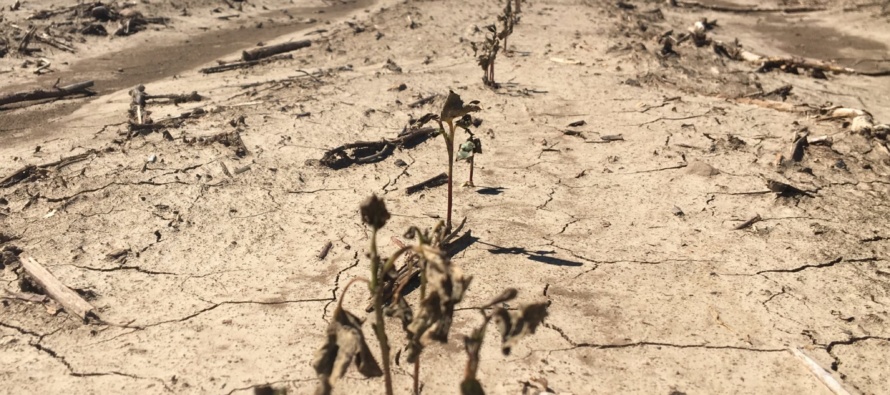Sandblasted Cotton/Re-Plant Decisions

Related Articles
- Rice Variety Trial Results For 2010, Plus Rice Research Report 0
- Evaluation of Peanut Prescription Rx Program in Mississippi 0
- Fertilizing Cotton with Poultry Litter 5
Latest Tweets
Approximately 20% of the cotton acres intended in Mississippi have been planted; however, given the cool, wet weather as well as high winds in the north Delta over the past several days, a number of re-plants will likely be taking place. A number of calls have come in this week regarding cotton with seedling disease which has primarily been diagnosed as Rhizoctonia seedling disease. Rhizoctonia is known by several names including rhizoc, soreshin, damping-off, etc. The typical symptoms appear as a sunken lesion at the base of the soil line which can girdle the stem. The girdling ultimately causes the seedling to collapse and die. Rhizoctonia seedling disease is typically worse under cool, wet conditions which have been common for the past several days. Little can be done to remediate cotton after the onset of Rhizoctonia seedling disease. Cotton seedlings become more resistant to seedling disease as they age. If cotton survives the cool, wet period and continues to put on new growth once conditions improve, the crop will likely be fine. However, if stems have deep, sunken lesions and plants begin to shrivel over large areas, a re-plant is in order.
Sandblasting in cotton has been another issue that has arisen over the past several days. Wind driven soil particles can cause wounds on cotton stems and leaves. Injury as a result of sandblasting can appear as minor burning to complete desiccation (think black leaves and tissue). Stems may also exhibit abrasion injury as observed in the image below. In addition, leaves may develop a silvery appearance where blowing soil particles have abraded the cuticle. As symptoms worsen, stems may appear to split and crack as well as become dark brown to black in color. Damage tends to be worse on higher ridges. Evaluating sandblasting damage and deciding whether or not to replant can be challenging. If stems are wounded only on the surface, the wound will likely become covered in callous tissue and survive. However, if wounds are deep, the stem will probably break over before the plant has a chance to recover. When evaluating leaf burn and desiccation, be sure to examine the newest true leaf and tissue in the terminal. If the stem in intact and green material is emerging from the terminal the plant will likely recover.
Thanks to Brooks Blanche for the photo above.
Thanks to Tom Eubank for the photo above.
Keep in mind final stand counts when making re-plant decisions. Data generated at Mississippi State has shown that healthy plant populations as low as 15,000 plants per acre will produce outstanding yields. On a 38″ row this is equivalent to 1.1 plants per foot or 11 plants every 10 feet – this will appear very thin in seedling cotton. Skips in plant populations are extremely detrimental to yield. If your field has numerous areas where skips in excess of 3 feet are present, re-planting will be beneficial. If the decision is difficult to make, keeping the stand is probably the best choice. However, in the image above, the decision to re-plant is pretty straightforward.







Let me tell You a sad story ! There are no comments yet, but You can be first one to comment this article.
Write a comment